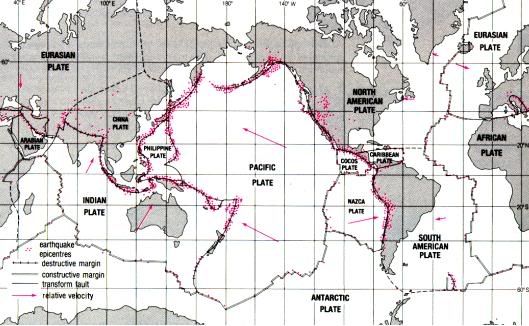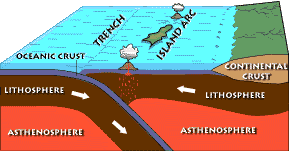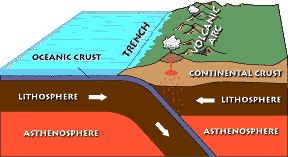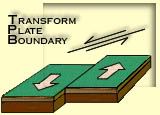
Ocean to Ocean Convergent Boundary

Two ocean plates collide or when denser seafloor due to cooling begins to sink. One of the plates bend and slide under another. This creates a subduction zone, forming a deep-sea trench. The magma rises and forms volcanoes. An example on Earth is Japan; it is a volcanic island arc.
Ocean to Continental Convergent Boundary

An ocean-floor and a less dense continental plate collides. The denser plate sinks under the continental plate. The subduction zone is where the oceanic plate descends into the upper mantle. Volcanoes are made above them. High temperatures and pressures make the plate that was subducted under the other. Magma is newly formed along the plate boundaries. This forms volcanic mountains. A place that demonstrates this is the Andes Mountains in South America.
Continental to Continental Convergent Boundary

Continental to continental convergent boundaries occur when two continental plates collide. Most of the time, no subduction occurs because both plates are less dense than the material that is in the asthenosphere. As the plates collide, they crumple up and form mountain ranges. It also causes earthquakes. The Himalaya mountains were made by the collision of the Indo-Australian Plate and the Eurasian Plate.
Ocean to Ocean Divergent Boundary & Continent to Continent Divergent Boundary

The boundary where two plates that move apart from each other is a divergent boundary. They initially form rifts and then rift valleys. In the Atlantic Ocean, the North American Plate is moving away from the Eurasian and African plates. This creates the Mid-Atlantic Ridge. A valley in Eastern Africa called the Great Rift Valley was formed as two continental plates separated.
Transform Fault Boundary

Transform fault boundaries occur when two plates slide past another moving in opposite directions or in the same direction at different rates. Earthquakes occur when one plate slides past another. The San Andreas Fault is a transform-fault plate boundary that is formed by the Pacific Plate and the North American Plate sliding past each other.
Works Cited
USGS Geology in the Parks 2004 http://wrgis.wr.usgs.gov/parks/pltec/converge.html
Understanding Plate Motions 1991 http://pubs.usgs.gov/gip/dynamic/understanding.html